
Építőművész MA
Váradi Botond
témavezető
Marián Balázs
konzulens
Tihanyi Dominika
szakdolgozati konzulens
German Kinga
mestermunka
A Kert
A kert az emberi lét meghatározó térbeli alkotóeleme, mely a házzal együtt az ember otthonterét képezte. Az emberiség városokba költözése óta a kert leszakadt a háztól és luxusként – privát kertként –, illetve közösségi kertek formájában van jelen. A háztól való elszakadás nem pusztán a kert térbeliségét szünteti meg, hanem a kerthez kapcsolatos rítusok felfüggesztését is jelenti. Ezek a rítusok az emberi lét olyan aspektusait határozták meg, melyek különös hiányt szenvednek kortárs világunk mindennapjaiban. Diplomamunkámban egy olyan idealizált teret képzelek el, mely a szakdolgozatomban felvázolt kertek helyzetére próbál egy építészeti választ adni, de ugyanakkor a kortárs városépítészet,, gazdasági, társadalmi és politikai kihívásait is figyelembe veszi. Egy olyan tér – illetve terek csoportja – megalkotása mely feloldja a folyamatosan változó városszövet feszültséget. A neoliberális várospolitika és a ráépülő városi struktúra elidegenedett helyzetbe taszítja a városlakót, aki nem talál az őt körülvevő ingerek feldolgozásához és a pihenéshez szükséges teret. A városi kertek sorsa sem könnyebb, mivel élethosszuk a barnamezős területek szabadon hagyásától függ, ami ideiglenes; a kertet ápoló közösség – avagy a kertben ápolt közösség – folyamatos költözésre szorul, akár egy bérlakos. Az otthonától megfosztott lét hiányt szenved a stabilitásban, mely viszont feltétele annak,, hogy az egyén belső kertjét ápolja. A “bérlakos” státusz egy alárendelt pozícióba taszítja a kertet és otthonának állandóságát a városfejlesztés spekulatív természete határozza meg. A kertek megszűnése, illetve költöztetése megszakítja azt a térbeli élményt, amely által létrejöhetne a kertben megtapasztalt térbeliség megismerése, mely a tér otthonosságát biztosítja. Diplomamunkám egy olyan városi kert létrehozását kezdeményezi, mely képes megtartani állandó otthonát, viszont nem veszít a városi kertek szabad szervezési struktúrájából. Ennek érdekében a kert egy meghatározó elemként kell megálljon a városi lét mindennapjaiban. Erre a megfelelő helyszín a Dohány utcai zsinagóga melletti telek meglévő és felig lebontott épületei (Dohány utca 10,, Síp utca 8-10) szabnának keretet, melyek egyben egy eredeti városi zárványt alkotnak. A épületek karaktere a belvárosra jellemző épülettömegbe feloldódik, viszont a köztük zajló elképzelt élet feltárásra alkalmas. A köztes teret a téglaépületekhez képest egy pontszerű előregyártott pillérváz tölti ki, mely lakhatásnak, piacnak, termelésnek és oktatásnak ad otthont a fogyasztás mellett. Erre a pillérvázra és a téglaépületekhez egyaránt üvegházak csatolódnak,, melyek nem pusztán a termelést biztosítják,, hanem a házak gépészeti működésének kihagyhatatlan elemeit is alkotják. Így az épülethez kapcsolt kert egy funkcionális szerepet vállal a ház működésében; elszakíthatatlan elemmé válik. Az üvegház ilyen szempontból növeli a városban történő termelést, erősítve a város gazdasági autonómiáját. Ugyanakkor az üvegház egy olyan térbeli elemnek tekinthető, melynek zárt karaktere a kert – és az abban megtapasztalt lét – zárványminőségét ápolja. Véleményem szerint ez a térbeliség eltér a városi kert eddigi formáitól, hiszen a városi szövetbe való beültetése nem egy átmeneti megoldás, hanem egy eleve neki szánt területen történik. Az üvegház – mint médium – új formával gazdagítja a városi kert eddigi nomád jellegét. A városi kert ideiglenes formájától elszakadva állandó otthont és autonómiát nyújt az üvegházban ápolt közösség számára a városcikk folyamatos változásában.
szakdolgozat
Városi kertek - Városi közösségek autonóm területei?
Szakdolgozatom bemutatja, hogy a kert az emberiség történetének kulcsfontosságú terét alkotja, és a történelem során a társadalmi, gazdasági és kulturális élet aspektusain túl is hatást gyakorol ránk. A kert lényegében állandó termelő és esztétikai funkcióval rendelkezik, ezen túlmenően a társadalomra gyakorolt hatása sem hagyható figyelmen kívül. A kert ezen társadalomépítő tulajdonsága különösen fontos szereppel bír a 21. század városában, mely városcikként értelmezhető. A kertbe való menekülés és a technológiától való szabadulás létünk paradoxonjaként is értelmezhető. A 21. század csúcstechnológiája rendkívüli hatással bír az élet minden aspektusára és bár szolgálja az emberiséget, az ember mégsem képes lépést tartani vele. Egyre inkább elzárkózik a megértésétől és menedékbe húzódik. Pusztán a „modern” technológiára való támaszkodás távolabb helyez minket önmagunk megismerésétől; az előállítás kiszolgáltatottságában az egyén nem tud hiteles létben részesülni. A városi kert erre a szélsőséges szellemi kiszorításra nyújt térbeli menedéket.
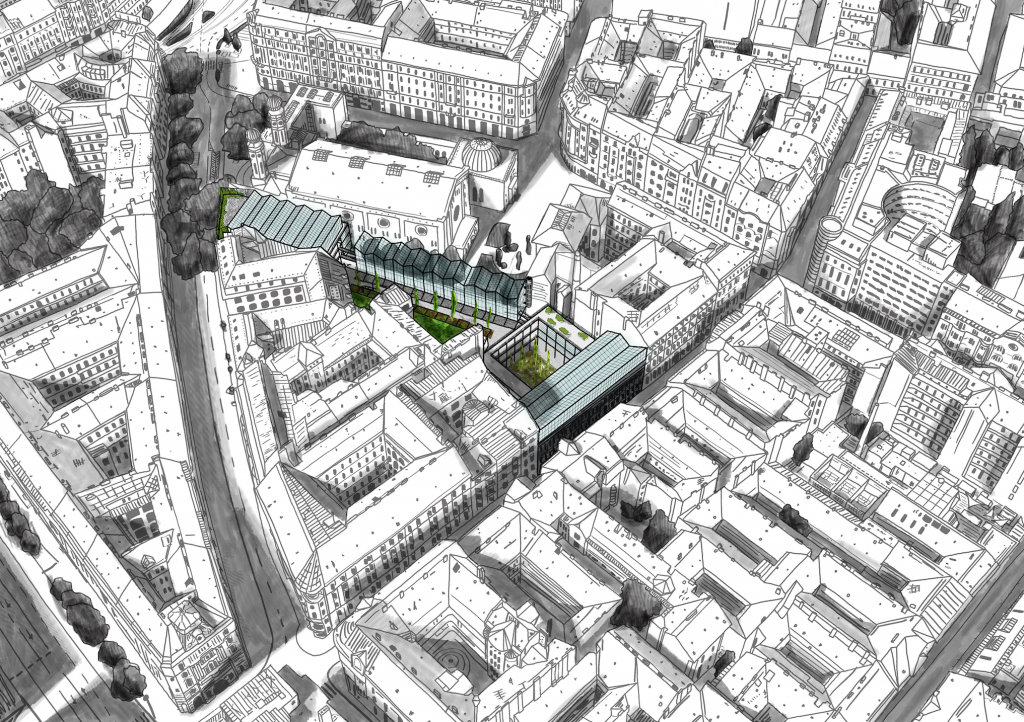
beépítés
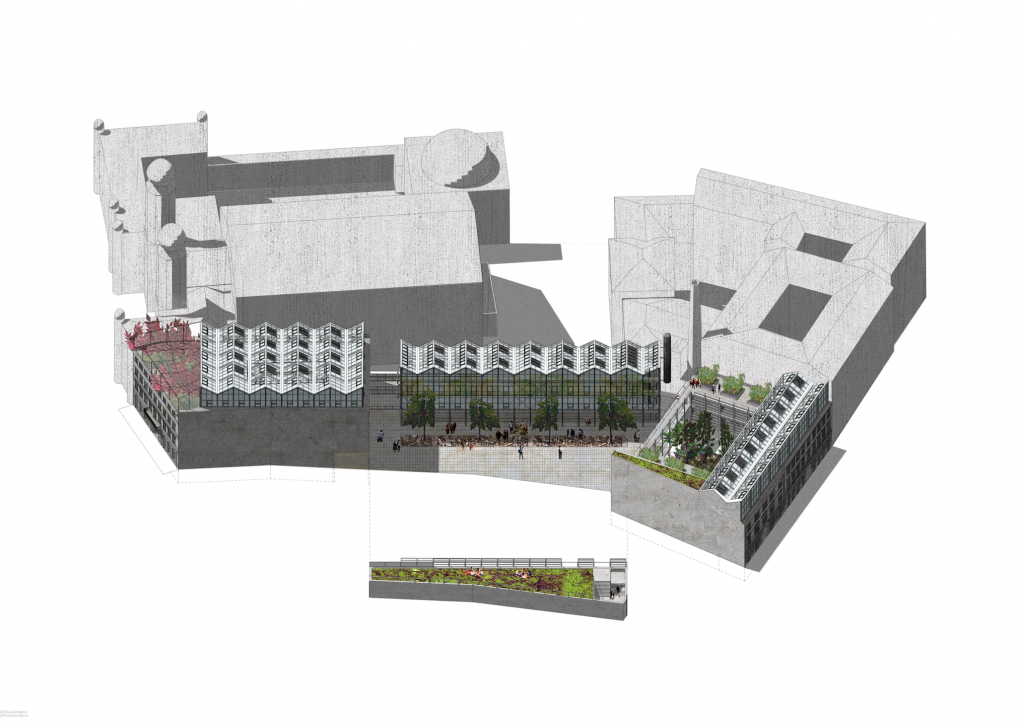
axo
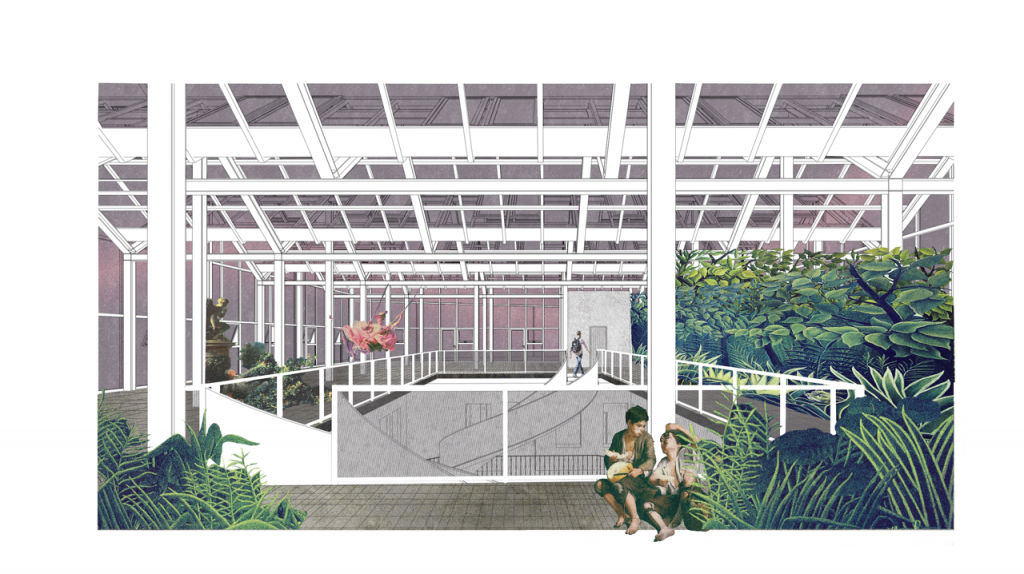
lakó üvegház
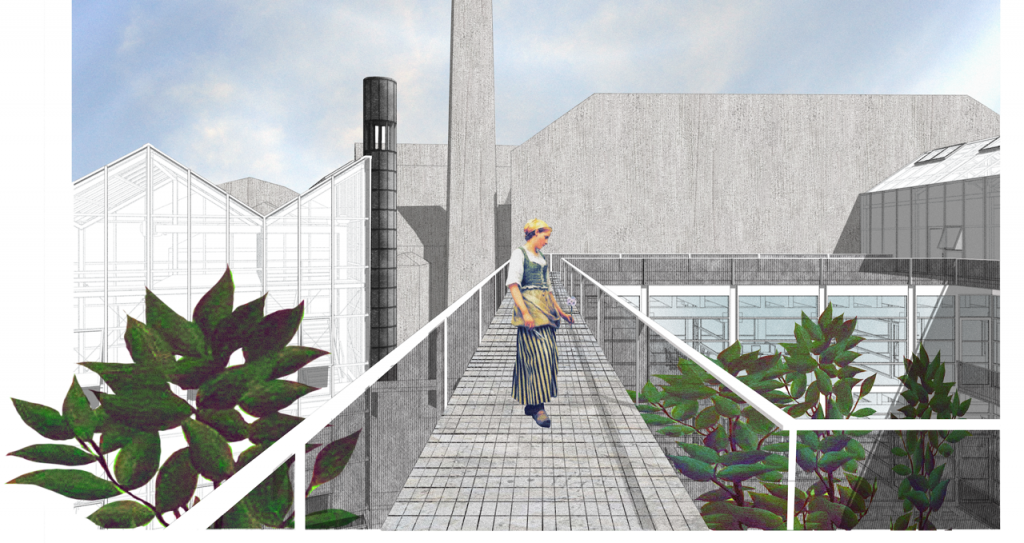
piac oktató kapcolata
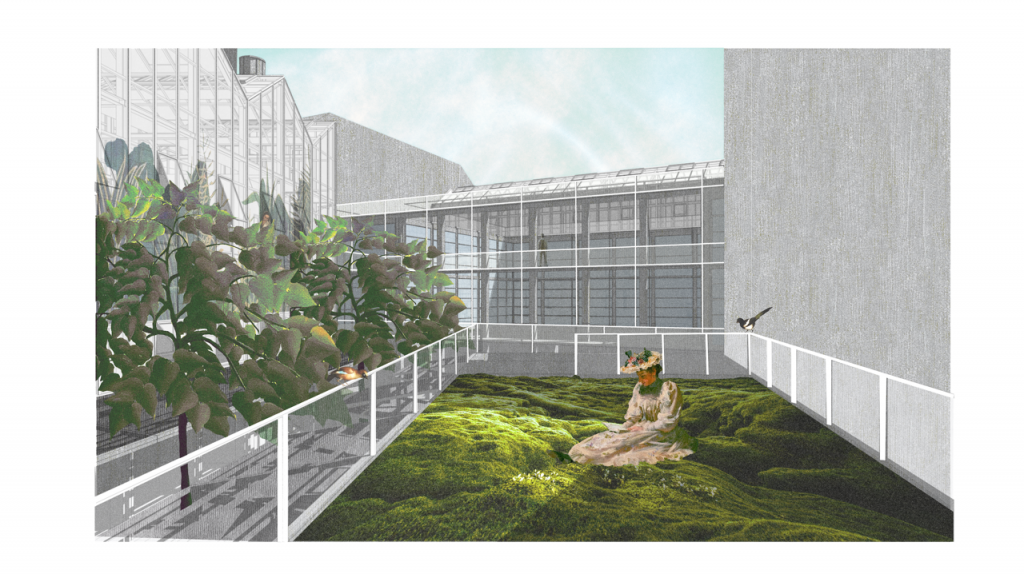
piac moharét
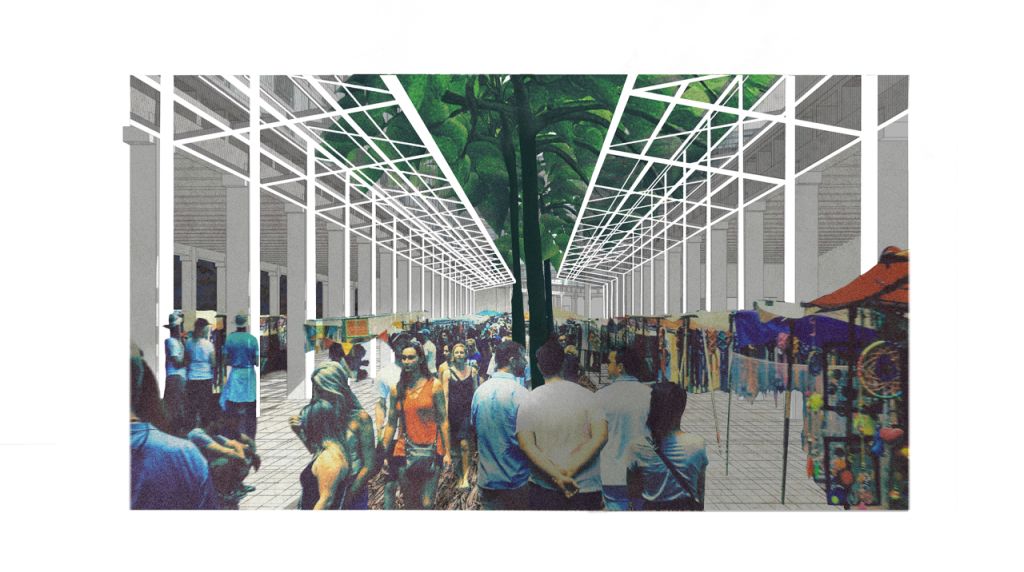
piac
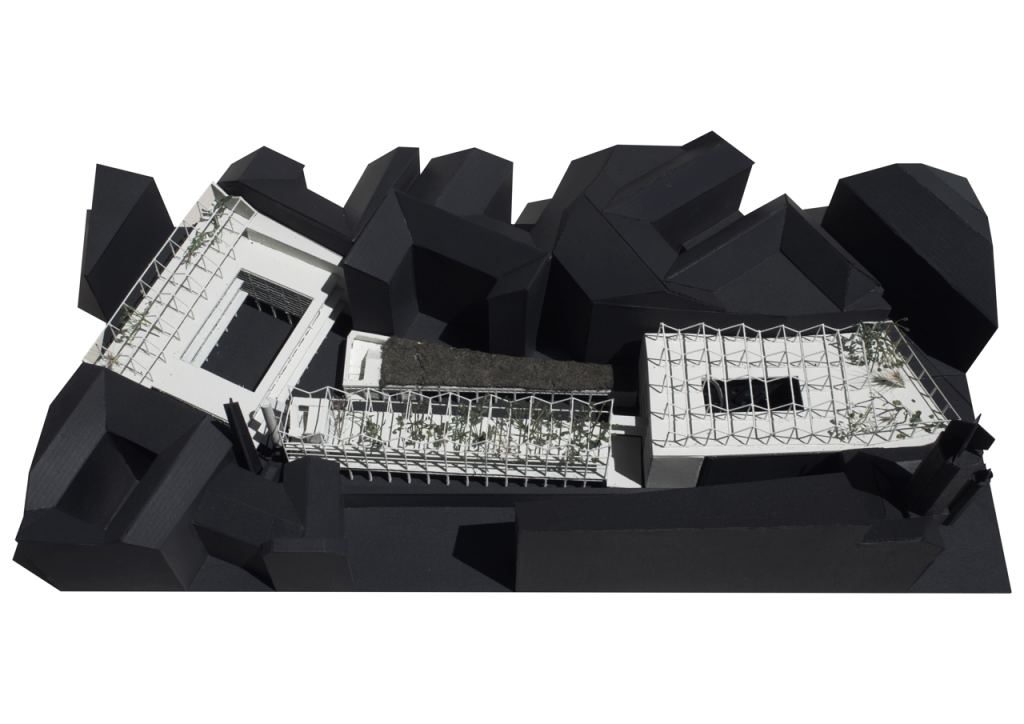
felülnézet 2
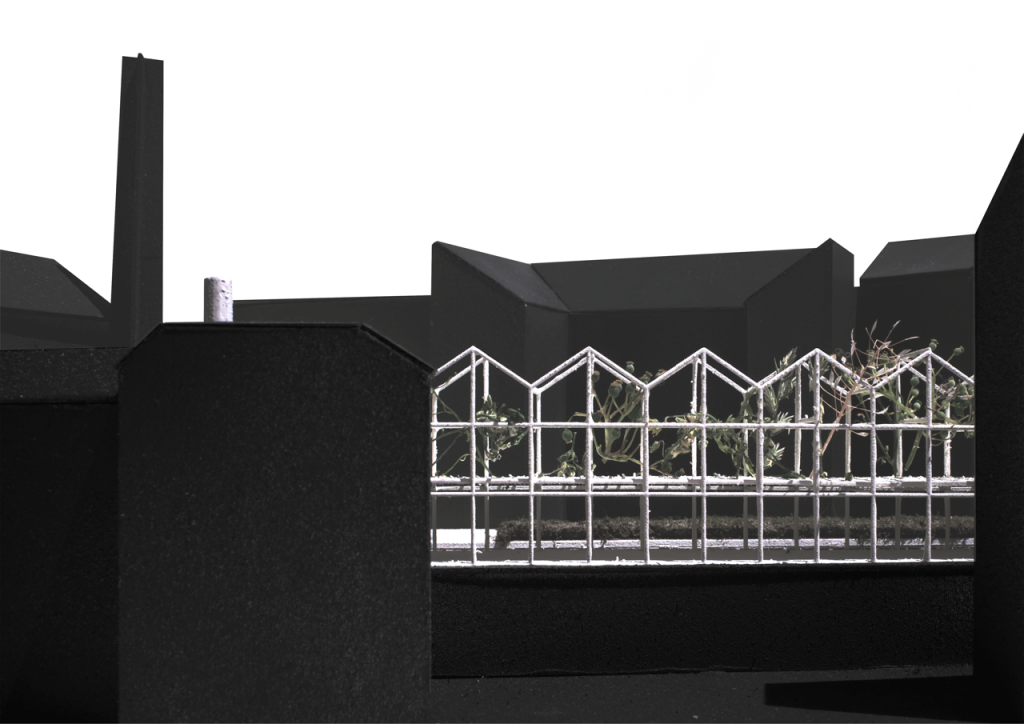
oldalnézet
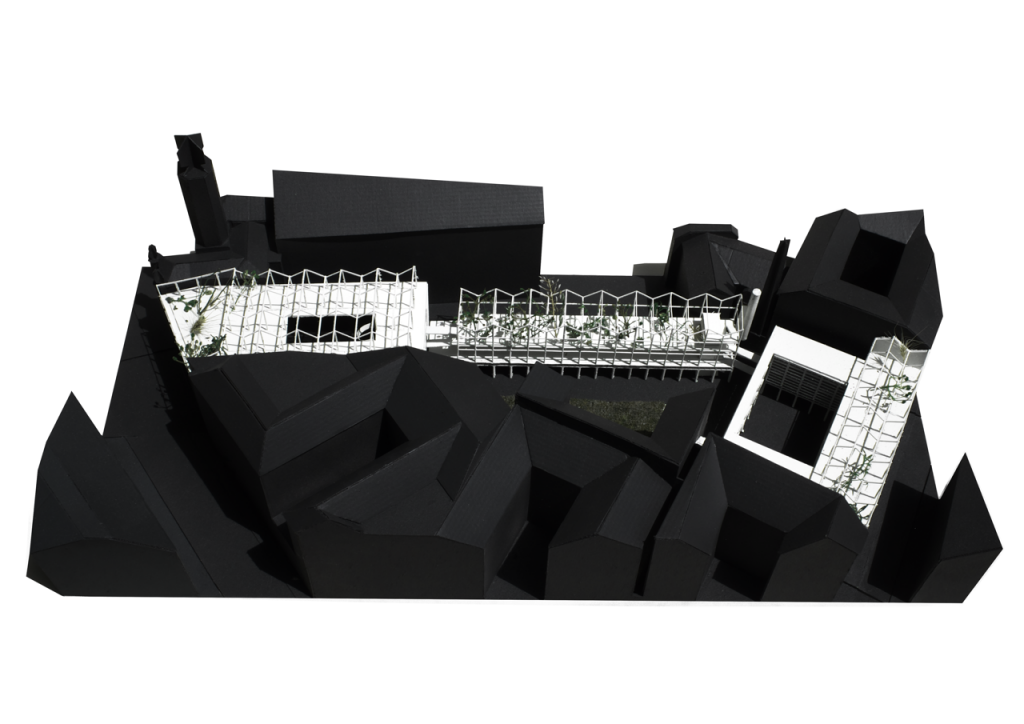
felülnézet 1
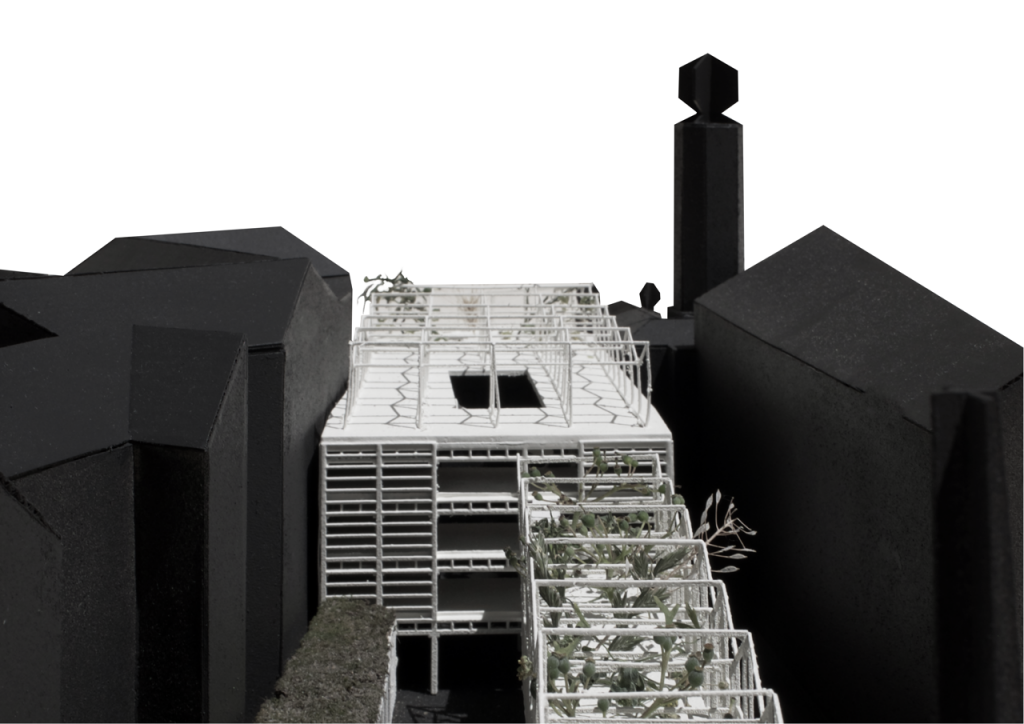
lakó piac kapcsoalt